Comparison test: Inner values and hot prices - which eleven-metre cruiser performs best?
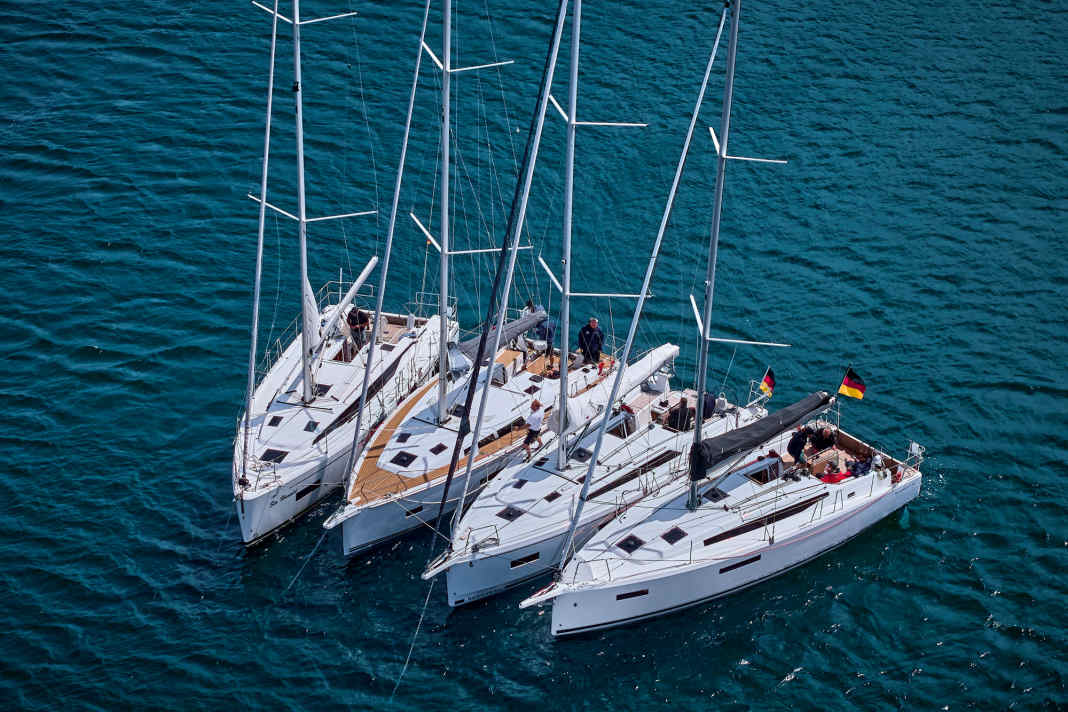



- Everyone can sail well, but there are differences in handling
- Type of wood is a matter of taste, there are alternatives
- Either way, opinions differ on the bunks
- Bathroom with shower is only available as standard with Hanse. And the pantry?
- The machine must be easily accessible
- The bottom line
- In detail: equipment, prices and YACHT rating
During the comparison under sail, none of the four yachts was able to establish a clear lead. All models gave a convincing performance in our group test on the Flensburg Fjord and - taking into account the different rig and keel configurations - achieved a similar level overall.
You can read the detailed results on sailing performance, trimability, handling in manoeuvres, equipment on deck and manoeuvrability under engine power in Part 1 of the comparison test.
The second part of this class comparison now focuses on living and touring comfort below deck. We assess the stowage options, the functionality of the individual areas and the quality of the fittings. We also list the prices for the boat and for required and optional additional equipment.
Everyone can sail well, but there are differences in handling
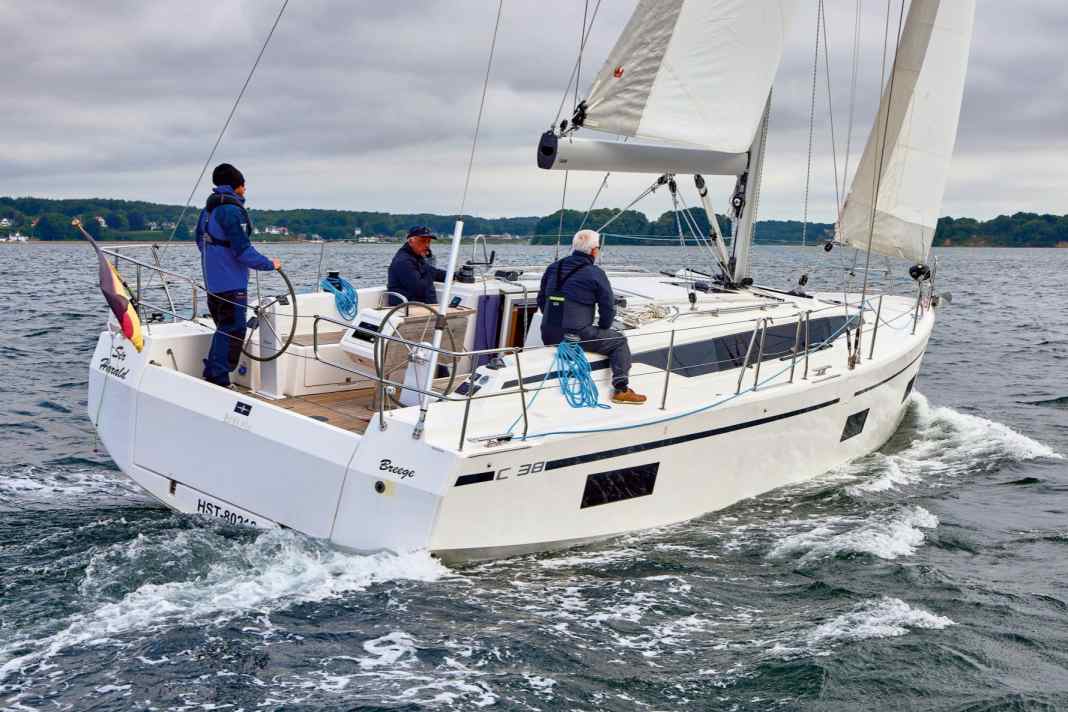




In the Sonvik marina in Flensburg, the YACHT test team took a close look below deck on all the boats. A direct comparison reveals the main differences, particularly in terms of space utilisation. With hull lengths of around eleven metres, the options for interior fittings are fundamentally limited. The standard layout is therefore the same for all ships in the test group: two double cabins aft, one double cabin forward and a toilet room aft. There is also a saloon with galley and - in some cases only as an option - a small navigation system. Alternatively, all four boats can also be converted into twin cabins with a large cockpit. A second toilet room is also available in the foredeck. The comparison group is also conceptually homogeneous in terms of the variants.
That is also interesting:
In terms of spaciousness, however, the two German boats from Bavaria and Hanse benefit from their large hull volume. With widths of just under four metres, they are fuller than their French competitors, especially in comparison to the Sun Odyssey 380 (extensively tested) with a width of only 3.76 metres. The Bavaria C38 (Click here for the individual test). Its laterally offset saloon table creates a clear passageway to the front and thus also opens up the saloon visually. The interior is clearly structured and uncluttered.
In second place is the Oceanis 37.1 (to the individual test), whose side-mounted galley also visually widens the saloon and gives a very straightforward impression. With Hanse 360 (read the test here) and Jeanneau Sun Odyssey 380, on the other hand, the table is in the centre, which restricts the passageway and makes the interior appear somewhat convoluted. However, the Hanse scores points with a wide double door to the foredeck, which in turn benefits the feeling of space in the saloon.
There is a choice of two or three cabins, plus one or two bathrooms. This is standard in the class.
It must be mentioned, however, that an assessment of impressions below deck can never be one hundred per cent objective. Rather, it is always subject to subjective perception. What some people describe as spacious and cosy is not necessarily the same for others.
Type of wood is a matter of taste, there are alternatives
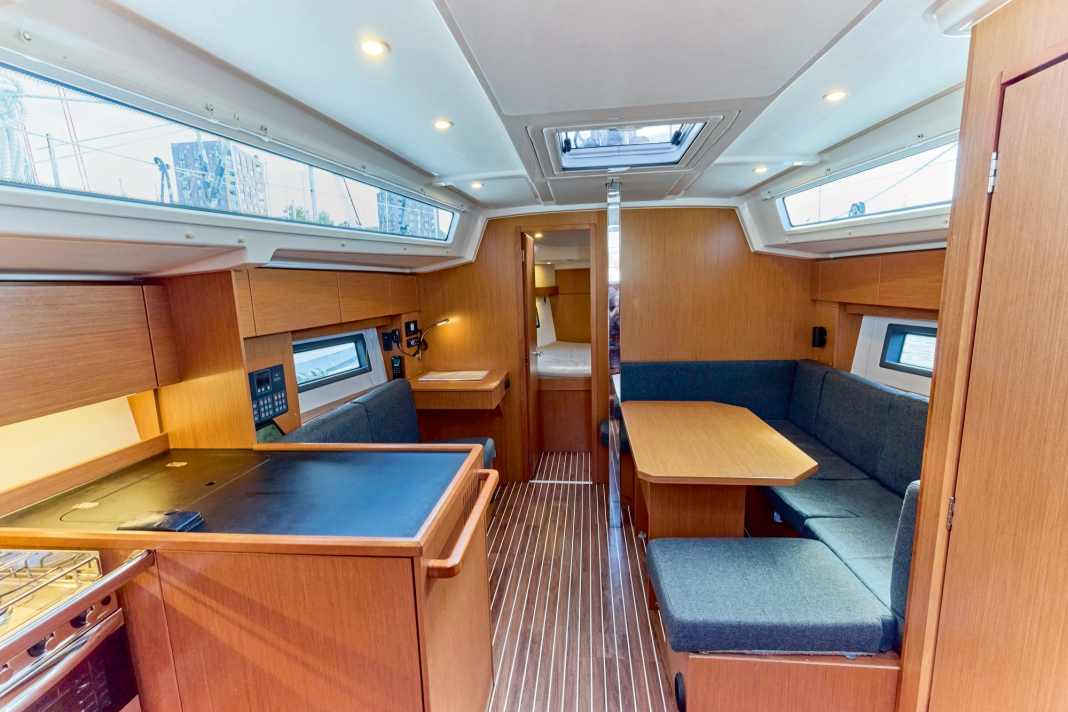




All four boats offer sufficient sleeping comfort for two adults in the forward cabin. The front-runner is once again the particularly voluminous Bavaria C38. With a length of two metres and a width of a generous 1.70 metres at shoulder height, it has the largest sleeping area in the foredeck. The Oceanis 37.1 also has plenty of space at the front. The width at shoulder height is slightly smaller on the French yacht (1.60 metres). Nevertheless, two people can lie comfortably next to each other.
In contrast to the competition, Hanse has installed an island bed in the foredeck. Although this makes it easier to get into bed over the sides, it is at the expense of the berth dimensions. Assuming that you sleep with your head forward in the foredeck of the Hanse, the width at shoulder height is only 1.20 metres. Jeanneau has taken an unusual approach and installed the sunbathing area sideways in the bow of the Sun Odyssey 380. This has the advantage that the berth is the same width over almost the entire length. This arrangement offers good sleeping comfort, especially for two people. However, the width of 1.40 metres is not exactly generous.
All four test boats offer the option of installing an additional bathroom for the owners in the foredeck. In this case, the bed on the Oceanis as well as on the Hanse is placed sideways in the room - as is already standard on the Jeanneau. On the Bavaria, the triangular-shaped berth is retained, but it is limited at the head end due to the toilet compartment. It is likely to be cramped for two adults.
Either way, opinions differ on the bunks
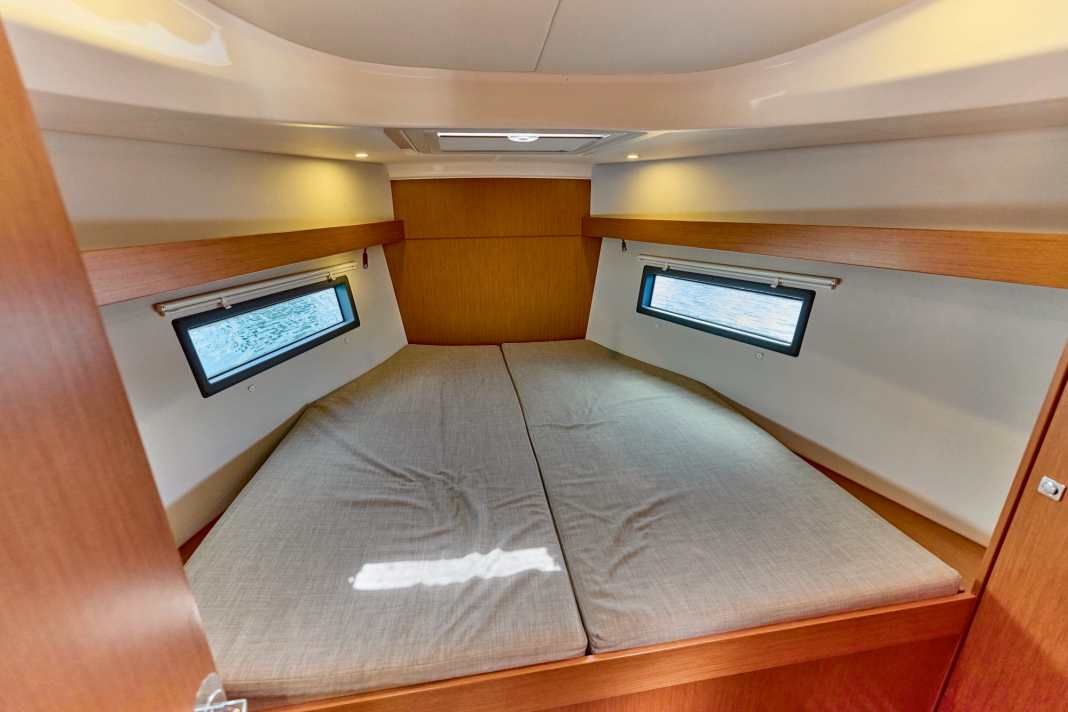





The double aft berths on the Bavaria, Beneteau and Jeanneau boats have similar dimensions. They are around two metres long and about 1.50 metres wide. The comfort is also comparable; the berths on these three boats are arranged in a rectangular shape. On the Hanse, however, the aft berths are built deeper into the boat and follow the contours of the waterline. Although the berths offer a record width of 1.60 metres at shoulder height, the footwell is only 1.20 metres wide.
Despite all the uniformity, the class is innovative. All boats feature many cleverly designed details.
But above all: only on the Bavaria are the two aft cabins separated by a double longitudinal bulkhead, which is standard on larger boats. This channel, which is around 33 centimetres wide, provides space for technical installations, but otherwise remains empty and serves as sound insulation between the cabins. This gives the Bavaria more privacy in the stern.
On the other yachts, the aft cabins are only separated by a relatively thin longitudinal bulkhead. On the Beneteau and the Jeanneau, this wall is not structurally load-bearing. It is moved to the side if the boat is ordered with only one aft cabin. In both cases, the berths in the two-cabin models are around 30 centimetres wider than the standard, making them king-size.
The Hanse does not offer this flexibility - the layout and berth dimensions remain the same in both versions.
On the Bavaria and the two French models, the saloon table can also be ordered in a lowerable version so that the U-shaped seating area with inlay cushions can be used as an additional berth. However, with widths of between 1.10 metres (Jeanneau) and 1.26 metres (Bavaria), these berths are too narrow for two people. Hanse goes its own way and offers an optional extension for the sofa. This creates a sea berth in which you can sleep safely between the backrest and saloon table even in rough conditions and strong heeling - a good solution.
On both the Hanse and the Sun Odyssey 380, the sofas on the opposite side can also be used as berths, albeit with restrictions. At 1.85 metres and 1.82 metres in length respectively, the berths are a little too short for slightly taller people.
Bathroom with shower is only available as standard with Hanse. And the pantry?
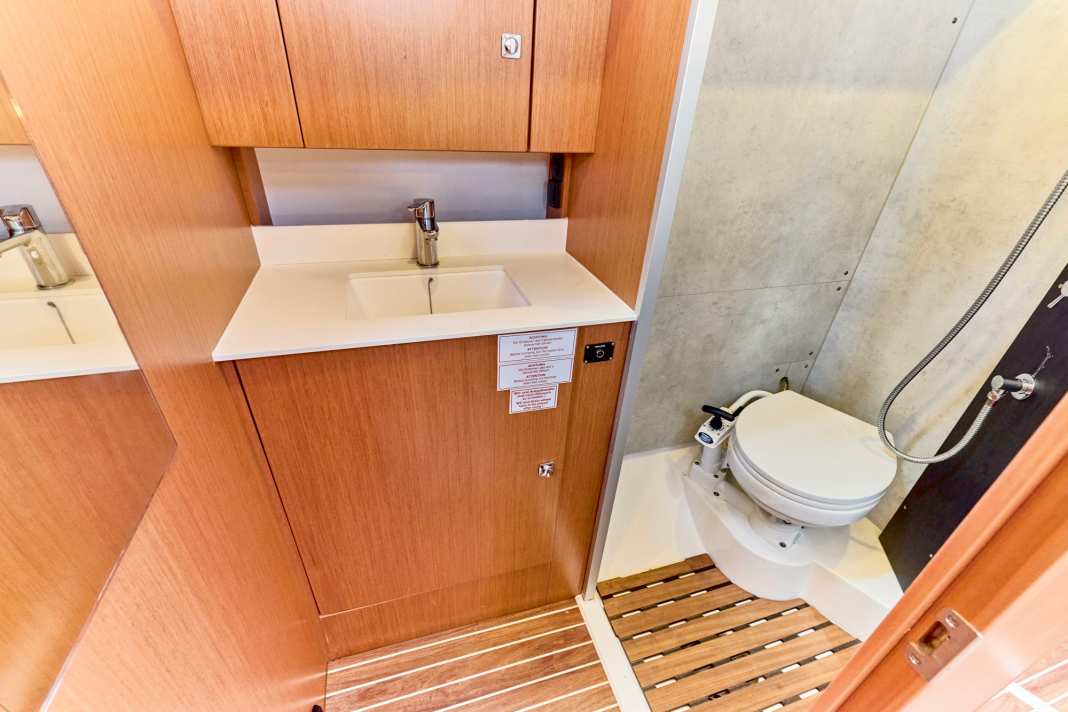





Cooking on board is an important topic for cruising sailors. Accordingly, manufacturers pay a lot of attention to the galley, especially Hanse. On the boat from Greifswald, the galley area is generally more spacious than that of the competition. A cover over the cooker is provided as standard, which increases the usable work surface. This detail is missing on the other boats in the competition. In addition, the Hanse's galley has more and more easily accessible storage space.
However, the galley in the Bavaria and the galley line of the Oceanis, which is built lengthways into the saloon, also score highly in terms of functionality and usability. The Jeanneau, on the other hand, is weaker in this discipline: its galley is much more compact, the work surfaces are smaller and there is less storage space for pots and pans and provisions.
The Hanse is the only boat in the comparison to have a wet room with a completely separate shower area as standard. The toilet room is significantly larger overall than that of the competition and therefore offers more freedom of movement. The Bavaria also offers a relatively large amount of space in the bathroom, and the toilet and washbasin are semi-separated, which is pleasant. However, there is no separate shower area.
The French manufacturers, on the other hand, are more flexible when it comes to the design of the toilet rooms. If the Oceanis 37.1 and the Sun Odyssey 380 are converted into owner's boats with only one aft cabin, part of the extra space is used as a shower. In this case, the toilet and shower on the Beneteau are physically linked and only separated by a curtain. A shower door would be desirable. The Jeanneau has a better solution: the toilet room and shower area are completely separate in the two-cabin model. In the standard three-cabin version, however, the bathrooms on French models are smaller than those on yachts from Germany.
A second wet room in the foredeck is available as an option on all four comparison candidates, but was not realised on any of the test boats. Judging by the plans and layouts, the size of the toilet rooms in the bow is limited to the limits of usability. On the Jeanneau, the additional bathroom in the foredeck appears to be the most spacious.
There is no shortage of storage space on all four boats. Large cupboards in all cabins and compartments at the side of the saloon and underneath the sofas and berths keep things organised below deck. The range of facilities is roughly comparable on all boats.
In terms of ventilation, the Hanse 360 has the edge. All four windows in the superstructure can be opened as standard, which ensures optimum air circulation. In contrast, the windows on competitor boats are fixed. On the Oceanis 37.1, however, mushroom vents are installed ex shipyard, which enable permanent ventilation. So Beneteau also has an advantage in this respect.
The machine must be easily accessible
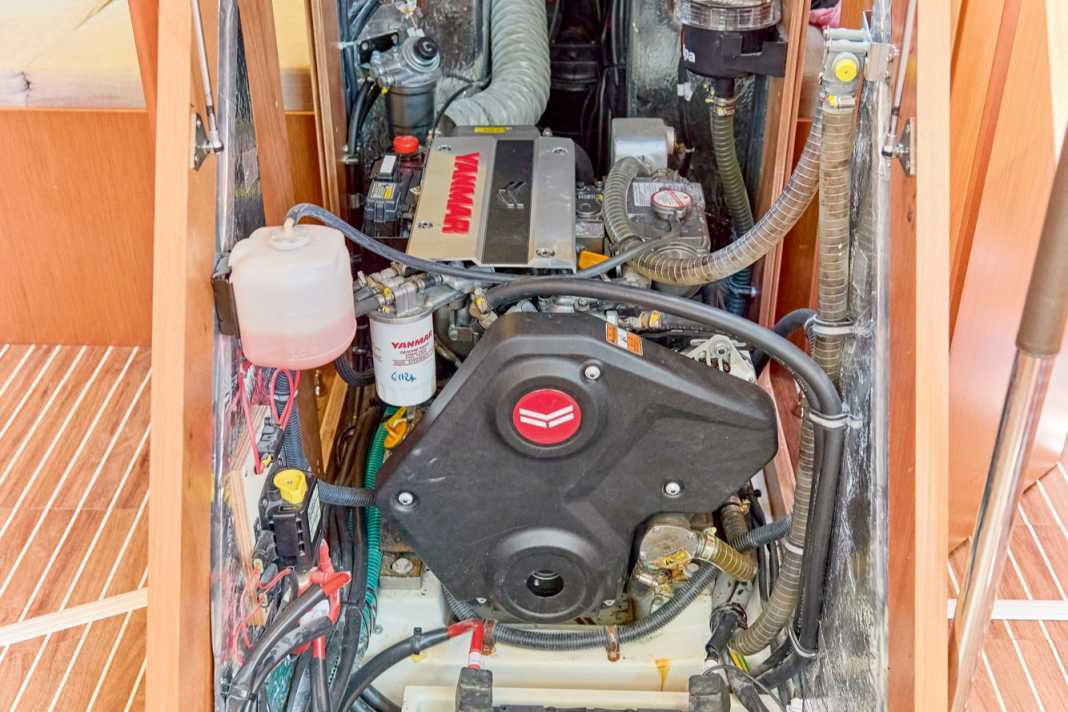




Once again, a direct comparison from boat to boat helps in the group test when assessing the construction and finishing qualities. In general, the fittings on the two German yachts from Bavaria and Hanse appear somewhat more robust and of a higher quality overall. The gap dimensions are consistent and the cut edges are rounded and sealed. This is particularly noticeable on the Bavaria. In addition, the furniture fittings and the hinges on the lids and doors are of solid quality.
The two French boats are somewhat simpler and more pragmatic below deck. In parts, their fittings look a little rickety, and many of the invisible installation components are only roughly milled out, the cut edges neither sanded nor sealed. However, you have to look very closely to recognise any noticeable differences in quality.
One thing is clear: all four boats come from large, largely automated series productions. Therefore, none of the test boats can be expected to have a standard of equipment comparable to yachts from small series or boat builders.
The homogeneity of the concepts, the standard of equipment and the quality is also reflected in a certain uniformity in the costs. In fact, the gross base prices - i.e. including 19 per cent VAT - of all four comparison boats are within a surprisingly narrow range. They range from 207,130 euros for the Jeanneau Sun Odyssey 380 and ends at 222,650 euros for the Oceanis 37.1 from Beneteau.
The tariff structures also remain almost identical for the cumulative costs, i.e. the ready-to-sail price or the comfort price (according to the YACHT definition).
The bottom line
Even after part two of the comparison test, the question of a clear, superior winner remains unanswered. All four boats have an equal number of advantages and disadvantages - which favours healthy competition. Ultimately, every prospective buyer must decide for themselves which concept they prefer and which factors are more important to them. You can't go wrong with any of the boats.
In detail: equipment, prices and YACHT rating
Bavaria C38
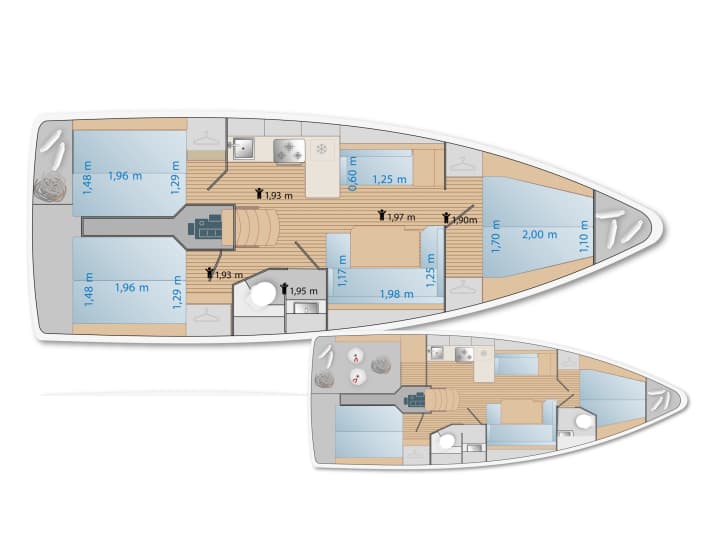
Equipment and prices
- Base price ex shipyard: 218.480 €
- Standard equipment included: Sail, engine, sheets, railing, navigation lights, battery, compass, cushions, galley/cooker, bilge pump, WC, electric refrigerator, holding tank with suction.
- For an extra charge: Sailcloth € 1,580, anchor with chain € 2,725, fenders/mooring € 255, fire extinguisher € 50, antifouling € 2,700, clear sailing handover € 1,600
- Price ready to sail: 227.390 €
- Guarantee/against osmosis: 2/5 years
- Surcharge for comfort equipment: Hole points (line-laid) € 1,750; Traveller not available; Electric windlass € 800; Tube kicker incl.; Backstay tensioner incl.; Spring cleats € 345; Sprayhood € 3,175; Teak in cockpit incl.; VHF radio € 1,785; Log, plumb bob, wind 3.425 €; Autopilot 4,500 €; Battery charger incl.; Shore power with RCD incl.; 230-volt socket (one) incl.; 12-volt socket in the sat nav incl.; Heating 5,390 €; Pressurised water system incl.; Hot water boiler incl.; Shower WC room incl.; Cockpit shower incl.
- Comfort price: 248.560 €
YACHT review of the Bavaria C38
The interior design is modern, coherent and harmonious. This is complemented by good workmanship down to the last detail.
Living and finishing quality
Lots of perceived room volume
Separate aft cabins
Impeccable workmanship
No shower compartment possible
Equipment and technology
Most spacious engine compartment
Large windows in the lounge
Cleanly installed on-board technology
Restricted ventilation
Beneteau Oceanis 37.1
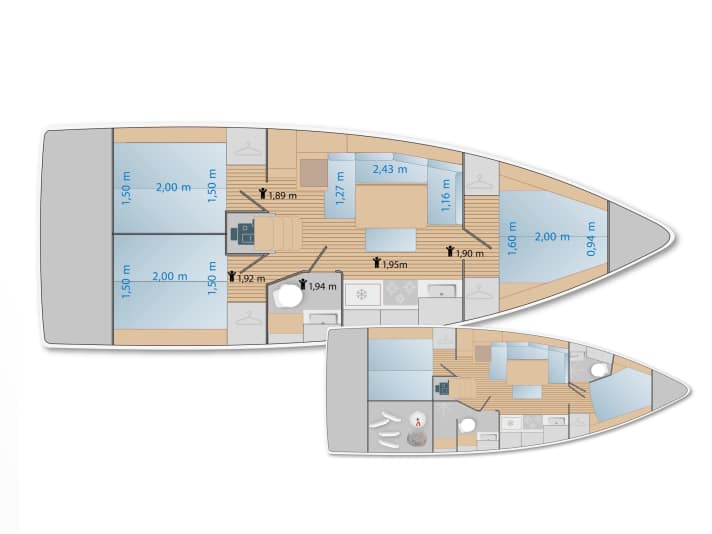
Equipment and prices
- Base price ex shipyard: 222.650 €
- Standard equipment included: Sail, engine, sheets, railing, navigation lights, battery, compass, cushions, galley/cooker, bilge pump, toilet, fire extinguisher, electric cooler, waste-holding tank with suction system
- For an extra charge: Sailcloth 480 €, anchor w. chain, fenders, mooring lines (package) 1.475 €, antifouling 3.545 €, clear sailing handover 3.930 €
- Price ready to sail: 232.080€
- Guarantee/against osmosis: 3/7 years
- Surcharge for comfort equipment: Hole points package Upwind; Traveller not available; Electric windlass € 3,080; Tube kicker incl.; Backstay tensioner not available; Spring cleats incl.; Sprayhood € 4,535; Teak in cockpit € 4.115 €; VHF radio trim level; log and echo sounder trim level; wind gauge trim level; autopilot trim level; charger trim level; shore power trim level; 230 volt socket trim level; package trim level 14.210 €; 12 volt socket in the navigation system incl.; heating 6.700 €; pressurised water system incl.; hot water boiler incl.; shower WC room incl.; cockpit shower trim level
- Comfort price: 264.720 €
YACHT review of the Beneteau Oceanis 37.1
The model from market leader Beneteau appeals with its straightforward and very functional interior design and scores with a high degree of flexibility.
Living and finishing quality
Unadorned interior design
Largest seating group
Flexible layout aft
Partially rough processing
Equipment and technology
Bathroom with shower option
Mushroom fan as standard
Machine very easy to reach
Few holding options
Hanse 360
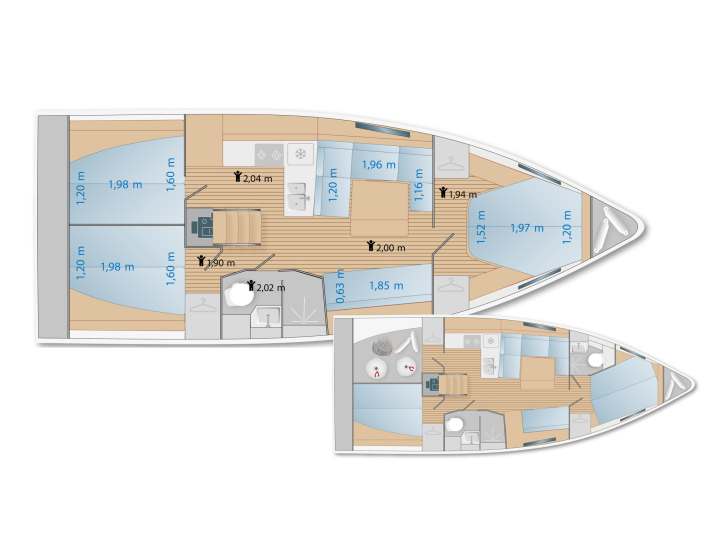
Equipment and prices
- Base price ex shipyard: 221.220 €
- Standard equipment included: Sail, engine, sheets, railing, navigation lights, battery, compass, cushions, galley/cooker, bilge pump, WC, fire extinguisher, electric cooler, holding tank with suction.
- For an extra charge: Sailcloth €1,430, anchor with chain €4,580, fenders/mooring €340, antifouling €2,915, clear-sail delivery €4,520
- Price ready to sail: 235.005 €
- Guarantee/against osmosis: 2/2 years
- Surcharge for comfort equipment: Hole points (line-laid) € 2,620; Traveller not available; Electric anchor windlass Cruising Package; Tube kicker incl.; Backstay tensioner incl.; Jumping cleats Cruising Package; Sprayhood € 3,450; Teak in cockpit € 1,960; VHF radio Navi Package; Log and echo sounder Navi Package; Wind gauge Navi Package; Autopilot Navi Package; Navi Package € 6.600 €; Charger incl.; Shore connection with RCD incl.; 230-volt socket (one) incl.; 12-volt socket in the Navi incl.; Heating 5.535 €; Pressurised water system incl.; Hot water boiler incl.; Shower WC room incl.; Cockpit shower Cruising package
- Comfort price: 255.170 €
YACHT rating of the Hanse 360
The Hanse impresses with its attractive, light-coloured interior. The large pantry and spacious bathroom with separate shower are also very appealing.
Living and finishing quality
Modern, bright interior
Solid workmanship in detail
Largest pantry in comparison
Berth dimensions limited
Equipment and technology
Window to open
Toilet room with shower
Robust furniture fittings
Little space in the engine compartment
Jeanneau Sun Odyssey 380
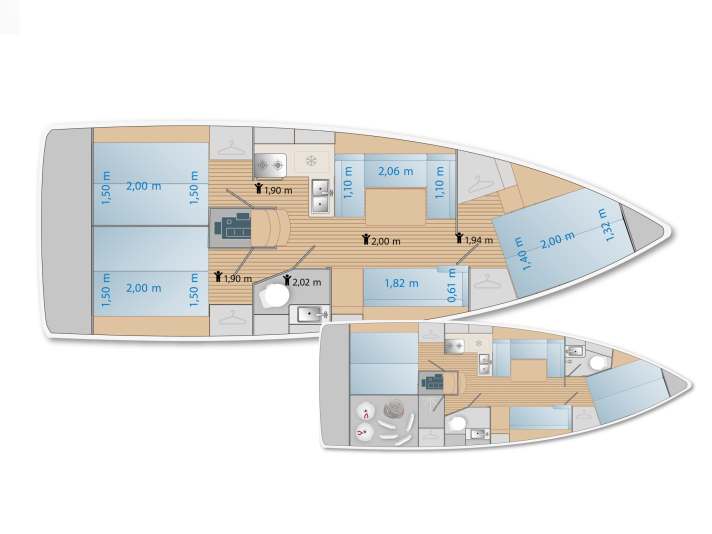
Equipment and prices
- Base price ex shipyard: 207.130 €
- Standard equipment included: Sail, engine, sheets, railing, navigation lights, battery, compass, cushions, galley/cooker, bilge pump, toilet, sailcloth, fire extinguisher, electric cooler, holding tank with suction.
- For an extra charge: Anchor with chain €1,190, fender/mooring €665, antifouling €3,670, clear sailing handover €7,705
- Price ready to sail: 220.360 €
- Guarantee/against osmosis: 3/5 years
- Surcharge for comfort equipment: Line adjustment, Hole points incl.; Traveller not available; Electric windlass 3.370 €; Tube kicker incl.; Backstay tensioner not available; Jumping cleats incl.; Sprayhood 4.200 €; Teak in cockpit incl.; VHF radio electric package; Log and echo sounder electric package; Wind gauge electric package; Autopilot electric package; Electric package 10.065 €; Charger incl.; Shore connection with RCD incl.; 230-volt socket (one) package; 12-volt socket in the sat nav incl.; Heating 5.600 €; Pressurised water system incl.; Hot water boiler incl.; Shower WC room incl.; Cockpit shower incl.
- Comfort price: 243.595 €
YACHT review of the Jeanneau Sun Odyssey 380
Their honest, pragmatic design concept is convincing in comparison. Comfort and cosiness do not fall by the wayside either.
Living and finishing quality
Pretty, straightforward extension
Flexible layout aft
Rectangular berth in the foredeck
Partially rough processing
Equipment and technology
Bathroom with shower option
Clear engine compartment
Additional hatch aft
Smallest pantry in comparison
ADVERTISEMENT

Insure your Bavaria C 38 from 1202.56 euros per year or 100.21 euros per month* - third party liability and comprehensive cover.
* Yachting24 offer valid for a sum insured of EUR 218,400 (with current value cover),
Hanse 360 insurance from 1210.62 euros per year or 100.88 euros per month* - liability and comprehensive cover.
* Yachting24 offer valid for a sum insured of EUR 221,300 (with current value cover),
Jeanneau Sun Odyssey 380 insurance from 1149.81 euros per year or 95.82 euros per month* - liability and hull.
* Yachting24 offer valid for a sum insured of 207,900 euros (with current value cover),
Insure your Beneteau Oceanis 37.1 from 1244.70 euros per year or 103.72 euros per month* - liability and hull.
* Yachting24 offer valid for a sum insured of EUR 223,100 (with current value cover)
Many options available: protect your crew with passenger accident insurance. Simply calculate and take out online: yachting24.de
Deductible 1300/1500 euros, liability cover 8 million euros.

